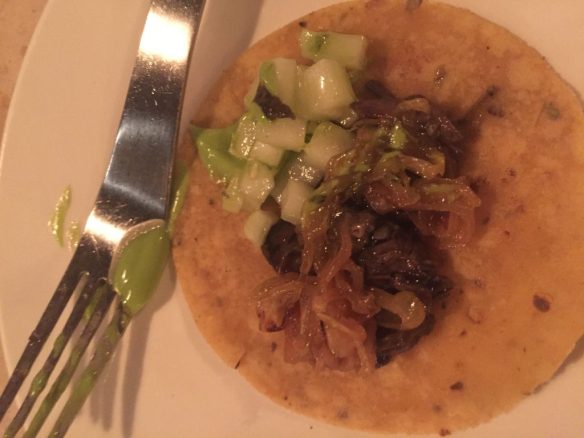I’m still obsessing over Mérida, Mexico! Mérida is the capital of the state of Yucatán, in the far east of Mexico. The Maya people have survived invasion, enslavement, disease and oppression and make up a substantial part of the population. Situated in the north east of the flat Yucatán peninsula, this can be a stop-off from the Caribbean beaches several hours away, and is close to the world-famous Mayan Indian ruins at Chichen Itz and Uxmal. It is a city of narrow streets, shady park squares, concealed courtyards and crumbling colonial buildings.

Mérida, Mexico!
One mustn’t miss the Central Plaza with the charming park square. Plaza Mayor, which is flanked by some of the city’s oldest and most impressive buildings, is closed off to traffic on Sundays, except for horse-drawn buggies and tourists riding in cycle rickshaws. Elderly women and young teens queue to sit at simple cafes and eat warm tortillas stuffed with blackened turkey, refried beans and salsa. On hot afternoons, patrons line up at the oldest ice-cream shop below the shaded colonnade.
Not far from the Plaza Mayor, don’t miss an exploration of Mérida’s main market, a massive covered, but not air conditioned, market. In two immense joined halls plus rows of ancillary stalls around the periphery, more than two thousand vendors sell their wares. It’s an interesting collection of vendors, from freshly hacked-up cows, pigs and fish to hand-tooled leather shoes and bags to numerous varieties of spices, vegetables, fruits, and home housewares; truly an exotic collection of everything a local might need, all under a massive covered field of small stalls. Arrive before noon to avoid the heat and to see the most abundant piles of vegetables and fruits. It is massive and should be explored with a guide if you have a particular need in mind. I always search for local spices or honey.

Spices from Mérida’s main market

The Mayan ruins of Uxmal

The Mayan ruins of Uxmal
And, of course, a few hours out of town lie some of the country’s most spectacular Mayan sites. I spent a few days with the most amazing guides and driver – one day wandering Mérida and the new Mondo Maya Museum, the winding brick lined streets of the old town, lunching at an authentic restaurant and perusing a few local shops. One day should be devoted to seeing the ruins of Uxmal and then perhaps lunching and swimming at a nearby private Hacienda.

Mérida, Mexico Cementerio General
As we drove to the Plaza Mayor, we slowly passed through a vast cemetery, the oldest Cementerio General. If you like moseying through old cemeteries, this one is a particular treasure. It is the largest and oldest in Mérida and is graced with a few very spectacular headstones and mausoleums of wealthy Hacienda owners. One surprise was the grave of an intrepid American woman, Alma Reed, who had a love affair with Governor Felipe Carillo Puerte. He, a Socialist, doing much to reform the and improve the lives of the Mayan workers, was assassinated with some of his brothers and Socialist colleagues. Alma who was a writer for several New York and San Francisco newspapers, was in San Francisco buying her wedding dress when he was assassinated. Crushed by the death of her lover and fiance, she asked to be buried near him. Her grave is across the street from his, lovers separated by a wide road. Her story is quite unique, I encourage you to find her story online or in the several books published about her life. Fully post on this amazing Cemetery.
Mérida is also becoming a capital for foodie’s. Roberto Solis who cooks at and owns Nectar has trod the kitchens of famed Noma, Per Se and traveled to Japan to work under the famed Chef Narisawa. His small restaurant is big on creative delicious cuisine, described as The New Yucatecan Cuisine, incorporating local spices and regional specialties. Highly recommend!

Nectar Restaurant Merida










 Not only is Mérida a wonderful draw on its own, the central location is the perfect starting point to explore the Mayan Route of ruins, cenotes (underwater sinkholes with crystal clear water), and refurbished haciendas. Some of the haciendas are private residences and we have access to the best of the best!
Not only is Mérida a wonderful draw on its own, the central location is the perfect starting point to explore the Mayan Route of ruins, cenotes (underwater sinkholes with crystal clear water), and refurbished haciendas. Some of the haciendas are private residences and we have access to the best of the best!

You must be logged in to post a comment.